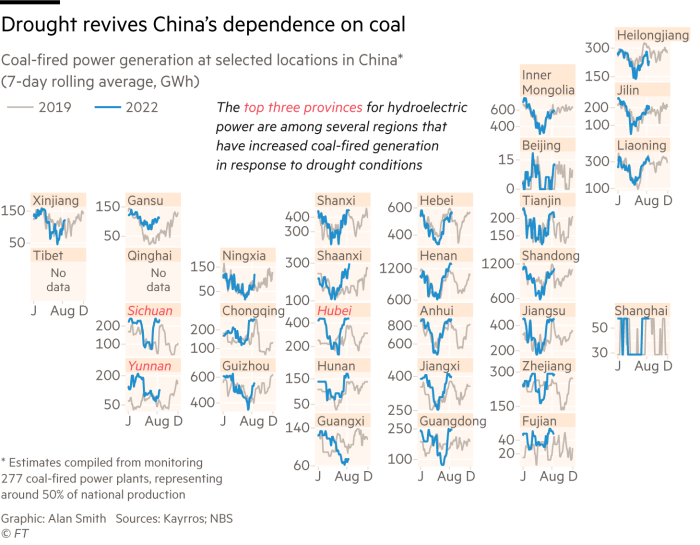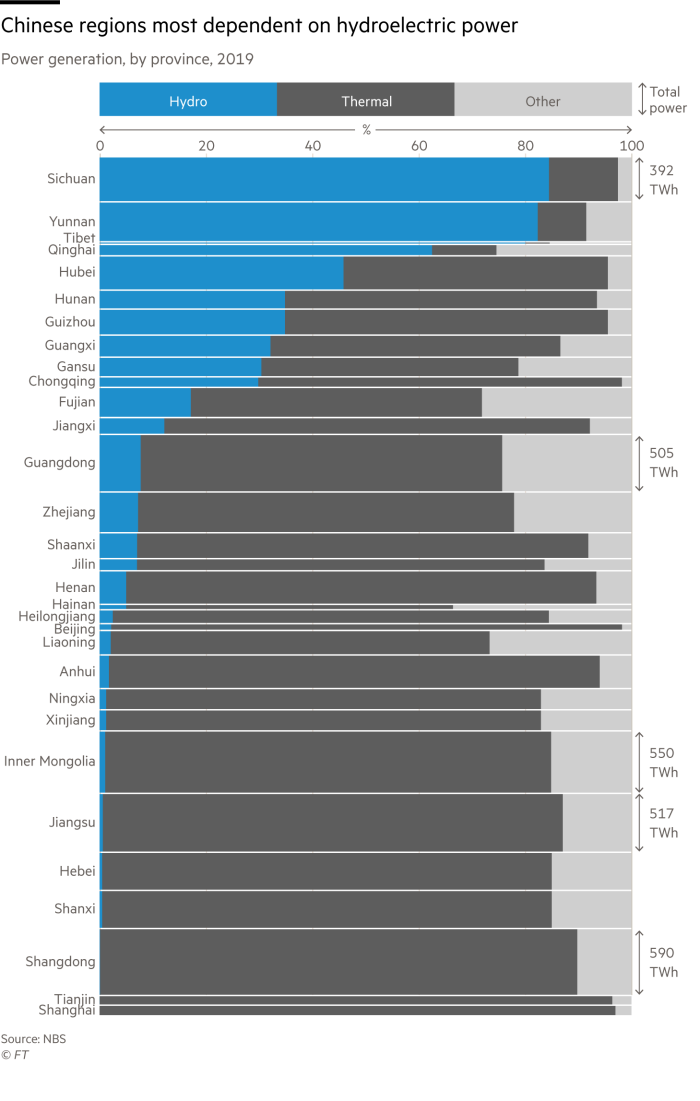Climate graphic of the week: China coal power generation nears record during heatwave

Roula Khalaf, Editor of the FT, selects her favourite stories in this weekly newsletter.
China’s coal power generation approached a record high this week, as a severe heatwave and drought threaten to cripple the country’s energy system.
Coal power plants were fired up in response to surging demand for air-conditioning, as record high temperatures persisted across central, southern and western China.
Coal is also filling the gap created by a drought that has cut power output from many dams, leaving major hydropower-producing areas such as Sichuan province struggling to meet the rise in electricity needs.
The country’s coal-fired power generation rose to 124.91 TWh in the week ending August 19, according to data from Kayrros, a satellite analytics company, an increase of 9 per cent on the same week last year. That estimate is extrapolated from satellite data that covers about half of China’s power plants.
“The latest levels have broken all summer records by far, and are flirting with the all-time record from January 2021,” said Antoine Halff, co-founder and chief analyst at Kayrros. “What we see is a very dramatic increase in power consumption in the electric sector, despite a low level of activity in cement and steel, which is quite weak.”
The recent rise in coal power generation runs counter to the broader trend, as China’s coal consumption so far this year has been lower than the previous year because of sluggish economic activity.

Lockdowns to contain coronavirus dented industrial demand in China, and coal consumption, after reaching an all-time annual high in 2021, fell 3 per cent during the first half of 2022*, according to the International Energy Agency.
China’s carbon dioxide emissions have fallen this year as a result. Beijing’s target of hitting a peak level of emissions this decade could be hastened by its economic slowdown, analysts believe.
“Coal demand in China has been weaker this year,” said Dmitry Popov, coal analyst at CRU. “Chinese imports are down around 30 per cent year to date.”
The energy crunch led Sichuan to declare an energy supply “emergency” earlier this month, forcing the province to impose blackouts on some factories. Chengdu, the provincial capital, also switched off lights including on its underground rail network.
The blackouts are further crimping activity when China is already struggling to boost its economy after growth slowed because of the Covid-related lockdowns.
* This article has been amended since original publication to say that coal consumption in China fell 3 per cent in the first half of 2022, not 2021
Climate Capital

Where climate change meets business, markets and politics. Explore the FT’s coverage here.
Are you curious about the FT’s environmental sustainability commitments? Find out more about our science-based targets here
Comments